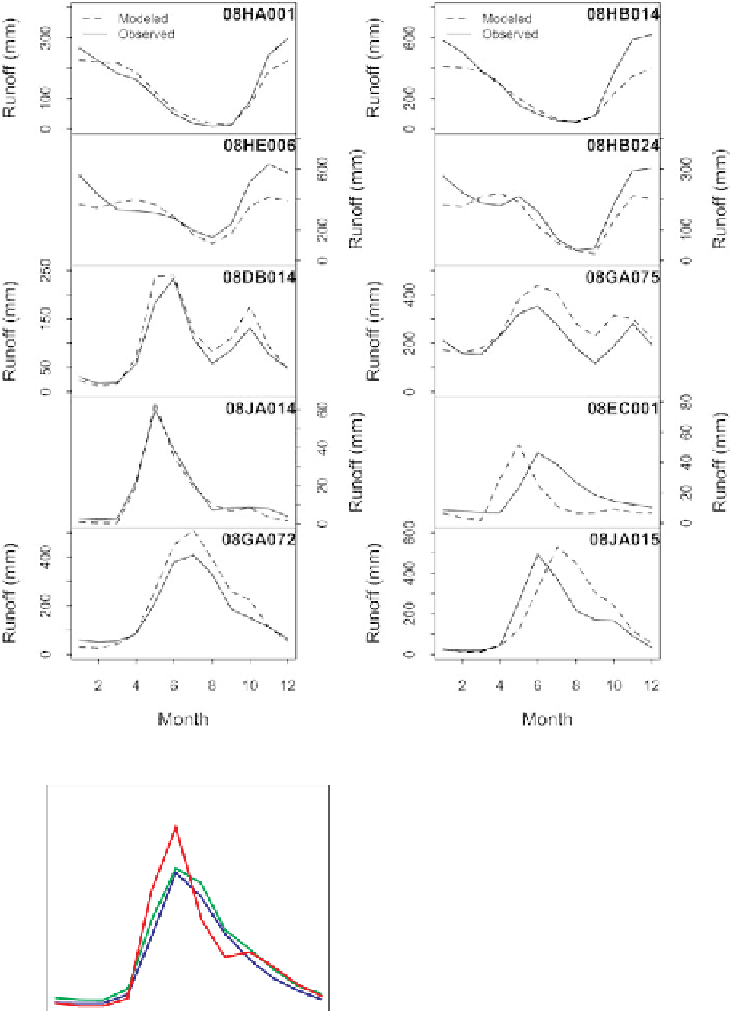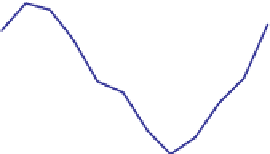Geography Reference
In-Depth Information
Figure 6.21. Seasonal hydrograph
results for a variety of catchments in
British Columbia. First to fifth rows
are examples of the following runoff
regimes: pluvial, hybrid regime with
rainfall dominant, hybrid regime
with snowmelt dominant, and glacier
fed. The left column presents well-
modelled regime curves, the right
column poorly modelled ones. From
Moore et al.(2011).
3
22
a)
b)
c)
6
18
2
14
4
10
1
2
observed data
initial model
optimized model
6
0
2
0
JF
MM
A
JJ
ASOND
JF
MM
A
JJ
ASOND
JF
MM
A
JJ
ASOND
month
month
month
Figure 6.22. Mean monthly runoff for three catchments in Switzerland: (a) Dischmabach at Davos, (b) Sense at Thörishaus and (c) Mentue at
Yvonand. From Pfaundler and Zappa (
2009
).
continuous variation in Euclidean space, which is
not the case in reality due to the organisation of the
landscape around the river network. However, spatially
distributed estimates are important, particularly in snow-
controlled environments (Kirnbauer et al.,
1994
; Nester
et al.,
2012
).
Predicting runoff in ungauged basins by daily rainfall
6.5 Comparative assessment
The aim of the comparative assessment of seasonal runoff
predictions in ungauged basins is to learn from the similar-
ities and differences between catchments in different
places, and to interpret the differences in performance in
terms of
landscape controls.
Understanding these controls sheds light on the nature of
the underlying climate
-
-
runoff models is discussed in more detail in
Chapter 10
.






















































Search WWH ::

Custom Search